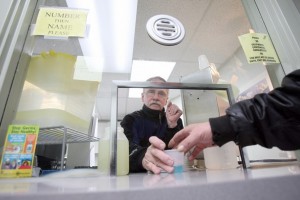For more than 30 years, the treatment of choice for Opiate addiction has been Methadone. Doctors have struggled along the way to find the most effective doses to help patients curtail their opiate cravings without succumbing to higher levels of methadone (it too has dependence-forming substances) than necessary.
Today’s contemporary course of action recommends methadone doses of at least 60 milligrams. However, physicians in treatment centers report a variety of doses that are effective, and many licensed Methadone treatment centers treat patients with doses that start at lower or higher than today’s recommended amount. Even with the range of Methadone doses, it proves to be the most effective treatment for addiction.
Although the use of methadone is associated with some side effects, like any medication, good reasons to give access to treatment of methadone maintenance patients engaged opioids are numerous. Research shows the effectiveness of methadone treatment can reduce:
- use of other opioids
- the use of other drugs, such as cocaine and heroin
- mortality
- risk behaviors associated with injection
- sexual risk behaviors and HIV/STD transmissions
- transmission of other sexual and blood borne pathogens
Moreover, scientists conclude that Methadone maintenance treatment contributes to improvements in:
- the addicts physical and mental health
- their life in society
- quality of life
- a smooth pregnancy
Maintenance treatment with methadone is also associated with better treatment retention.
Maintenance treatment with methadone may be advantageous not only for those who receive it, but also for the staff who administer and to the wider community and society as a whole.
For people who engage in opioid maintenance treatment with methadone provides access to a stable supply of legal drugs and classified on the pharmaceutical industry. It relieves the stress of having to constantly supply illicit opioids; constraint that often exposes them to criminal activity and risky sexual practices. Instead of living in a constant cycle of ups and downs due to repeated injections of heroin, for example, their mood and functional status stabilizes. In general, research shows that maintenance treatment with methadone in particular gives the following results:
- less time per day spent to consume narcotics
- reduction in opioid consumption obtained through illicit means (and maintain this stability as long as they follow their treatment)
- reducing the consumption of other substances, such as cocaine, marijuana and alcohol
- less time spent in drug trafficking
- less time spent in criminal activities
- less time spent in prison
- mortality rates significantly lower among patients treated with methadone (three times lower) than in untreated patients
- hazard reduction injection and behaviors that are related
- reducing risk behaviors for HIV transmission and STD
- lower risk of HIV infection
- potential reduction in the risk of contracting HCV or other pathogens carried by the blood
- better physical and mental health
- improvement in society
- better chance of getting a full-time
- better quality of life
For pregnant women who engage in opiod addiction treatment with methadone, combined with adequate prenatal care, there is fewer gynecological complications, and decreased fetal mortality rates. Methadone protects the fetus against violent fluctuations in levels of opioids and frequent withdrawal symptoms common among pregnant women who do not receive treatment for their opioid dependence.
The longer patients maintain their treatment they increase their chances of avoiding crime, and preventing and reduce a relapse.
For staff responsible for implementation, maintenance treatment with methadone is used
- provide an important medical and public health
- establish partnerships and linkages with other service providers and to provide clients / patients a range of services and supports
- to engage with patients in their care, positive therapeutic relationships and effective, and to gain experience with them
- to contribute to the educational process and capable of bringing the treatment of opioid consumers to take a fresh look at themselves and their consumption of alcohol and drugs and to make changes in their lives
For the community in general, the potential benefits of maintenance treatment with methadone include:
- the decline in criminal activity associated with the drug
- the decline in prostitution
- reduction in the number of discarded needles
In the whole of society, maintenance treatment with methadone provides:
- a decrease in crime
- a lower risks to public health
A total of 178 (3%) patients died either on treatment or within a year of their last prescription. The mortality rate among people off addiction treatment was almost twice that of people remaining in treatment. At the conclusion, Methadone treatment had 85 percent and higher chance of reducing overall mortality in opiate users if they were consistently taking the treatment.
It’s important to choose an effective treatment like Methadone for opiate addiction to avoid the yo-yo effect of relapse. All clinical studies show that Methadone maintenance is the best treatment to curb addiction, ease withdrawals and avoid mortality.

